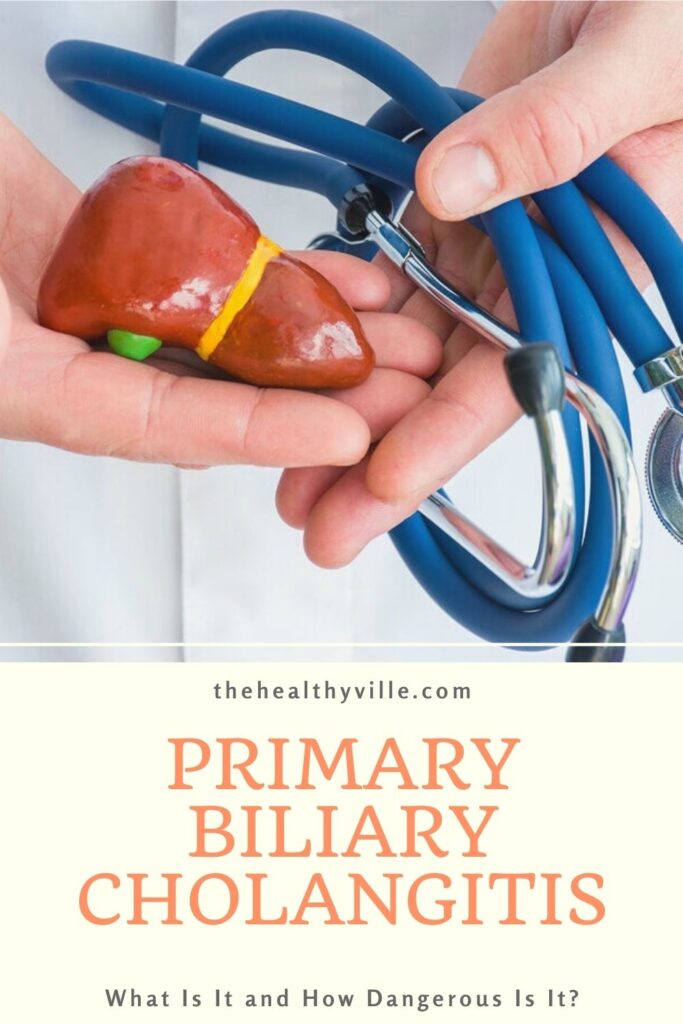Primary biliary cholangitis are unknown to science. There is also no treatment to cure this disease. However, there are measures that have a good level of efficacy.
Primary biliary cholangitis is a chronic liver disease. It occurs when the small bile ducts, which are scattered within the liver, are destroyed. These ducts are small-bore tubes that collect the bile produced by the liver and then carry it to the gallbladder.
Bile remains stored in the gallbladder while we are fasting. When we eat food, the gallbladder undergoes a contraction and releases the bile into the digestive tract. If there is primary biliary cholangitis, this entire process is blocked.
Under these conditions, the bile remains stagnant. In fact, this state is called cholestasis. Also, the liver becomes damaged and begins to replace liver cells with scar tissue. This state is known as liver cirrhosis.
Causes of primary biliary cholangitis
To date, it is not known exactly why primary biliary cholangitis occurs. However, the most accepted thesis is that it arises from the combination of genetic and environmental factors.
Science does not yet know the reasons why primary biliary cholangitis occurs. The strongest hypothesis is that it is an autoimmune disease. This means that it obeys a process in which the body turns against its own cells.
The most accepted thesis is that the disease is triggered by a combination of genetic and environmental factors. This leads to a specific type of white blood cell, called “T cells,” building up in the liver. Such cells fight bacteria or germs. However, by mistake, they also attack healthy cells.
Slowly and progressively, healthy cells die and are replaced by scar tissue, causing cirrhosis. Under these conditions, it is impossible for the liver to function normally. Women aged 30 to 60 are most prone to this disease.
Europeans and North Americans are at higher risk for primary biliary cholangitis, as are those with a family history of this disease. Smoking, the presence of previous infections and the ingestion of toxic substances are also risk factors.
Symptoms
More than 50% of people with primary biliary cholangitis have no symptoms. Usually doctors detect the disease incidentally, after performing a blood test for another reason. Those who do have symptoms tend to have a less favorable prognosis.
The early symptoms are basically itchy skin, dry eyes and mouth, and fatigue. In more advanced stages of the disease, new symptoms appear, such as:
- Swollen spleen.
- Painful upper right area of the abdomen.
- Pain in muscles, bones and joints.
- Swelling in the feet and ankles.
- Xanthomas, that is, small fat deposits located on the skin that surrounds the eyes, the eyelids or the creases of the elbows, knees, palms of the hands or soles of the feet.
- Accumulation of fluid in the abdomen.
- Jaundice, or yellowing of the skin and eyes.
- Hyperpigmentation. That is, darkening of the skin not related to the sun.
- Osteoporosis.
- High cholesterol.
- Diarrhea.
- Steatorrhea or fatty stools.
- Hypothyroidism.
- Weightloss.
Complications
The first complication of this disease is progressive liver damage. As a result of this, other pathologies develop such as cirrhosis, portal hypertension, gallstones, among others.
Primary biliary cholangitis progresses slowly, causing increasing damage to the liver. This can lead to other diseases such as the following:
- Cirrhosis. It is the most common consequence. It can lead to liver failure and other additional complications. The prognosis in these cases is unfavorable.
- Portal hypertension. It is an increase in pressure in the portal vein. This creates the risk of gastrointestinal bleeding, which can be fatal.
- Splenomegaly It is the enlargement of the spleen. The biggest risk is that it breaks.
- Gallstones Stones are painful and can lead to infections.
- Varicose veins. It is the enlargement of the veins, which can eventually rupture and bleed. If they are veins of the esophagus or stomach, life is in danger.
- Liver cancer.
- Hepatic encephalopathy. This condition reduces cognitive functions, mainly memory and concentration.
- Osteoporosis.
- Vitamin deficiencies.
Other People with primary biliary cholangitis are at increased risk of developing other diseases such as metabolic disorders, immune diseases, thyroid problems, rheumatoid arthritis, and CREST syndrome.
Other data of interest
At this time, there is no cure for primary biliary cholangitis. However, there are several medications that help slow the progression of the disease and prevent complications. Typically, the base treatment is ursodeoxycholic acid, or “ursodiol.”
In fact, recently obeticholic acid or Ocaliva and fibrates have been used. Doctors indicate methotrexate and colchicine, too. All these drugs are moderately effective against the disease.
In fact, if the drugs don’t work, the only solution is to go for a liver transplant. This is usually very effective. Still, there are reports of cases in which primary biliary cholangitis reappears after transplantation.
Don’t forget to SHARE all about primary biliary cholangitis with your friends and family on your social networks!

